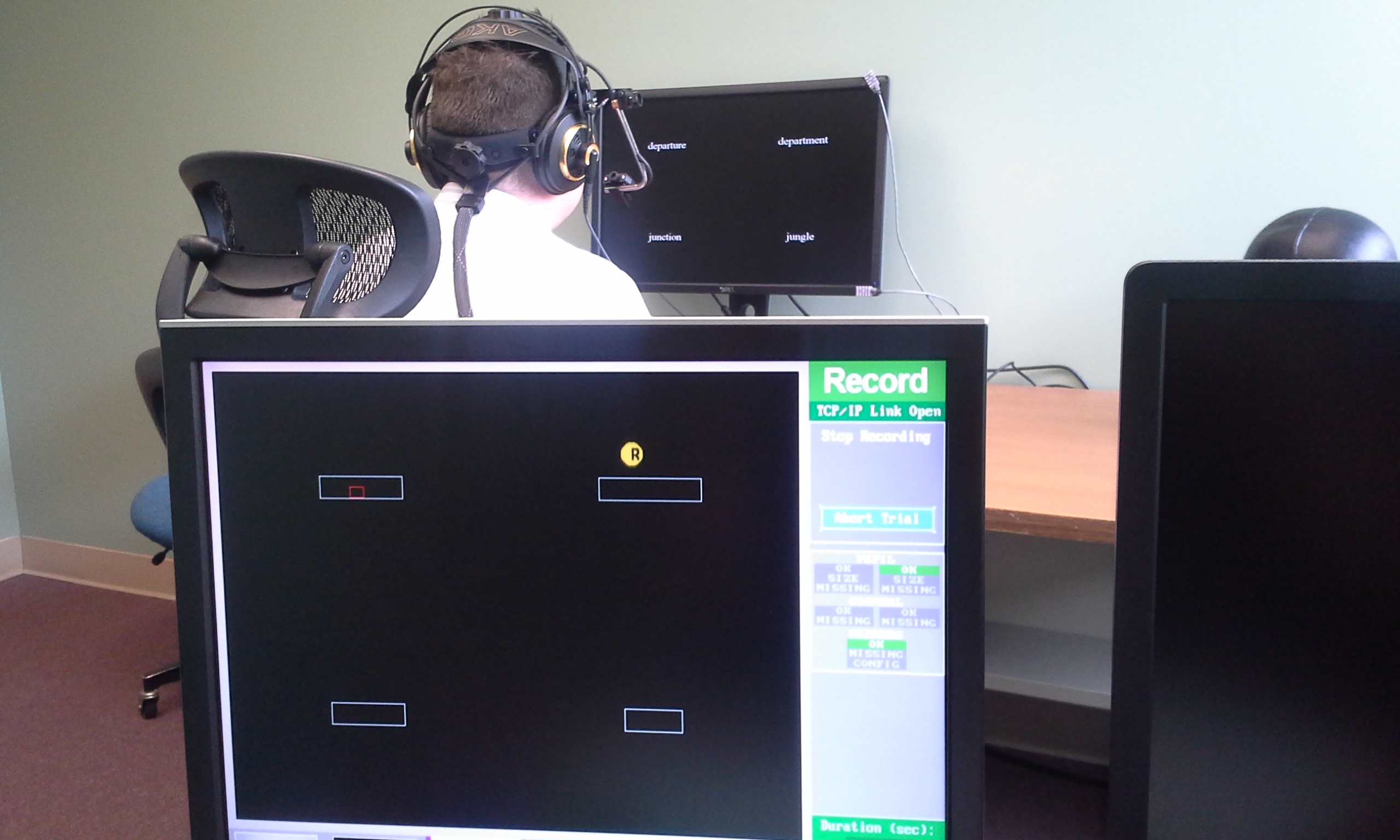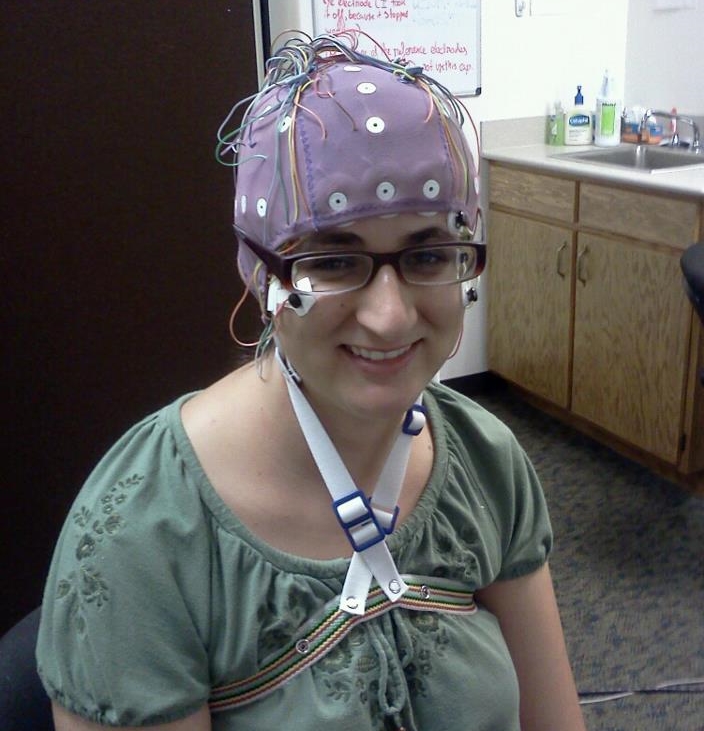My research centers around two main areas: Second language (L2) speech perception and bilingualism. I delve into the acquisition and processing of language, with a primary focus on these two aspects. Additionally, I bring experience in studying how native speakers and L2 learners process morphology, assessing L2 proficiency, and exploring innovative teaching approaches. More details about each area are provided in the following sections.
L2 Speech Perception
My primary research program aims to uncover fresh insights into how adult second language (L2) learners perceive and produce segments and words in their non-native language. I'm particularly intrigued by the role of various information types in the speech signal in shaping L2 lexical access, with a specific emphasis on stress as a cue for word recognition. Stress is used as a lens to examine how cross-linguistic differences (e.g., English and Spanish both have stress, but cued differently, while French or Korean do not) impact learners' ability to utilize stress for lexical access. Additionally, I explore whether learners can adapt to new cues not present in their native language.
However, my research on L2 speech perception extends beyond the study of stress and its role in word recognition. I also seek to provide explanations for common production errors in a second language. For instance, some of my work aims to unravel the origins of production errors made by Spanish learners of English in specific phonological environments. This includes investigating the production of epenthetic vowels in English clusters like /s/ + consonant (resulting in words such as 'esport' for 'sport'). I also explore how the absence of certain phonemic contrasts in their native language (e.g., /b/ vs. /v/ in Spanish) affects their perception and production of minimal pairs containing these contrasts (e.g., 'boat' vs. 'vote' in English).
In the future, I aspire to delve deeper into how L2 learners acquire new phonological cues and how various types of information in the speech signal impact L2 lexical access. Importantly, I aim to expand my research beyond the scope of Spanish-English L2 learners.
Bilingualism
In a broad sense, my secondary research interest revolves around understanding how various factors, such as language expectation, proficiency, or inhibitory control, influence the activation of an entire language system in bilingual individuals. Previous proposals suggest that these factors play a role in activating and inhibiting the two languages of bilinguals. However, it remains unclear how bilinguals employ these factors in real-time comprehension and spoken language production, and whether these factors interact with each other.
To address these questions, I've utilized different tasks and methodologies, including visual-world eye-tracking experiments and adaptations of this paradigm that elicit word productions.
Future research aims to delve deeper into how bilinguals use different factors to inhibit unintended languages. I plan to investigate how the degree of phonetic similarity between words in the Spanish speech signal and the phonetic representation of competitor words in English and Spanish influences bilingual activation. Additionally, I aim to explore how individual differences in proficiency, age of acquisition, and inhibitory control impact how bilinguals navigate the cognitive challenges associated with activating Spanish while inhibiting English, especially in the case of heritage Spanish speakers. In the long term, I aspire to refine existing bilingual activation models or potentially propose a new model based on empirical data gathered on the factors influencing bilingual activation and the underlying mechanisms.
Other Research
As part of my research training, I've actively participated in additional projects exploring how both native and non-native speakers process agreement morphology. These projects investigate morphologically complex forms, both in isolation and within sentences. Some aspects of this research involve behavioral measures (e.g., accuracy, response times), while others utilize electrophysiological brain responses (e.g., Event-Related Potentials). Various tasks, such as long-lag priming, self-paced reading, and masked priming, contribute to the comprehensive analysis.
Another research focus of mine involves assessing the value of Spanish proficiency, considering both native speakers and learners in different geographical areas. Collaborating with co-authors, our objective is to quantify the economic benefits associated with knowing and learning Spanish, encompassing aspects like salary, economic advantages, and expanded job market opportunities. This work led to my recent invitation to join the Scientific Committee of the Observatorio Nébrija del Español.
Furthermore, I have a keen interest in enhancing the teaching of less well-known phenomena, particularly the teaching of pronunciation in second language (L2) classrooms. Alongside one of my former students at Texas A&M University-Commerce, we are developing a curriculum designed to assist Spanish teachers in seamlessly incorporating pronunciation tasks into their daily classes. This initiative explores various teaching methodologies, including combinations such as task-based teaching.
Research in Progress
Solo Projects
- Illusory Epenthetic Vowels in English as a Second Language
- Use of Prosodic Cues in English Listeners' Processing of Spanish Lexical Stress
- Use of Prosodic Cues in Korean Listeners' Processing of Spanish Lexical Stress
- The Effects of L2 English in the Use of Prosodic Cues in Korean Listeners' Processing of Spanish Lexical Stress
- Tracking Bilingual Activation in Perception and Production (with Emphasis on Spanish Stress)
- Orthography vs. Perception: The Distinction between /b/ and /v/ by Spanish-Speaking L2 Learners of English
- Embedding Language for Specific Purposes Elements into the Traditional Classroom
- Task-Based Teaching in South Korea
Joint Projects
- Individual Differences in the use of L2 Lexical Stress (Collaborators: Sandra Schwab at the University of Zurich (Switzerland))
- Language Similarity and Trade Relationships (Collaborators: Adrienne Mack at the Mutual of Omaha (USA), & Enrique Martinez-Garcia at the Federal Reserve Bank of Dallas (USA)).
- The Economic Value of Spanish (Collaborators: Enrique Martinez-Garcia at the Federal Reserve Bank of Dallas (USA)).
- New Perspectives on the Teaching of Pronunciation: The Case of the Spanish Vowels (Collaborators: Patricia Arnold, Texas Christian University (USA)).
- Differential cue weighting in the Perception of the Three-Way Distinction of Korean Stops by L2 Learners and Native Speakers of Korean (Collaborators: Goun Lee, at Gacheon University (South Korea))
- The Perception of Korean Stops by Native Speakers of Spanish and L2 Learners of Korean (Collaborators: Jeffrey Holliday, at the University of Kansas (USA))
- Perception of Lexical Stress and Sentence Focus by Korean/Spanish Learners of English (Collaborators: Goun Lee, at Gacheon University (South Korea), & Dong-Jin Shin, at Jeonju University (South Korea))
- Lexical Stress as a Cue for Word Recognition in L2 Spanish (Collaborators: Goun Lee, at Gacheon University (South Korea), & Dong-Jin Shin, at Jeonju University (South Korea))
- Gamification in the L2 Classroom in South Korea (Collaborators: Roberto Vega Labanda, at Daegu Catholic University (South Korea), & Maria João Amaral, at Hankuk University of Foreign Studies (South Korea))
- Comparison of the teaching approaches to pronunciation in South Korea in both Portuguese and Spanish (Collaborators: Maria João Pais do Amaral, at Hankuk University of Foreign Studies (Seoul, South Korea))
- Cognitive benefits of playing Baduk (Collaborators: Daniela Trinks, Myongji University (Yongin, South Korea))
- Language-specific risk perception of climate change in English, Spanish, and Korean (Collaborators: Reazul Ahsan, University of Utah Asia Campus (Songdo, South Korea))
- Suprasegmental features in a foreign language: A multilanguage analysis (Collaborators: Marta Ortega-Llebaria, Pittsburgh University (Pittsburgh, PS, USA), Sandra Schwab, University of Bern (Bern, Switzerland), Keiichi Tajima, Hosei University (Tokyo, Japan), Mafuyu Kitahara, Sophia University (Tokyo, Japan), Zhaohong Wu, Beijing Foreign Studies University (Beijing, China))
Affiliations:
While working at Texas A&M University-Commerce, I was affiliated with the Applied Linguistics Lab as a visiting faculty.
At the University of Kansas, I was affiliated with and continue collaborating with projects in the L2 Processing and Eye-Tracking Laboratory, the Neurolinguistics & Language Processing Laboratory, and the Second Language Acquisition Lab.
In Spain, I collaborate with the ERI Lectura at the University of Valencia.


